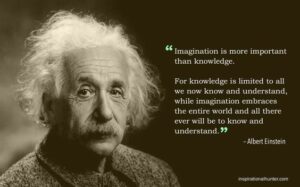This week, I have struggling to conceptualize what connectivism looks like with regards to course design. The idea of connectivism is really exciting. The idea that the internet has changed the essential nature of knowledge certainly resonates with me. But what does it actually look like? The learning theories analysis activity would suggest that the courses we are taking are more focused on acquiring specific knowledge from an authority in the subject.
Steven Downes (2007), who, if I understand correctly, co-founded the very first MOOC, makes a clear distinction between constructivism and connectivism in his blog post:
In connectivism, a phrase like “constructing meaning” makes no sense. Connections form naturally, through a process of association, and are not “constructed” through some sort of intentional action. …Hence, in connectivism, there is no real concept of transferring knowledge, making knowledge, or building knowledge. Rather, the activities we undertake when we conduct practises to learn are more like growing or developing ourselves and our society in certain (connected) ways.
Connectivism speaks to fewer rules, fewer constraints and students having autonomy over their learning environment. Knowing how to access information when it is needed is more important than what we currently know. Growing and developing ourselves certainly means more than googling an answer, doesn’t it?
But I googled. Last week, we had a dehydrated goat (it was -20’ish), which would likely have resulted in death overnight. A tube, some electrolytes, quick research on goat anatomy and a youtube video on how to administer a stomach-tube, I saved a goat’s life. I didn’t need to know how; I just had to be connected to a network that did. The ability to do this practically turned me into a vet. Well, that might be a stretch.
I had the privilege of listening to Dr. Allan J. Hamilton, A professor of Neurosurgery at the University of Arizona College of Medicine, speak about teaching and learning. He highlighted the importance of fostering imagination as imagination is how you deconstruct problems. Deconstructing problems is how you solve them. He talked about how problems were rarely insurmountable, and it is only our lack of imagination that makes them appear so. At the time, I was coordinating preschool programming, and I remember thinking to myself that his med school
students didn’t start as passive learners. They must have become so somewhere along the way. We enter schools full of creativity and imagination.

https://www.pinterest.ca/pin/551339179359224059/
I certainly want to continue to delve into the idea of connectivism. I think it takes an imaginative and creative mind to push beyond what we know, or we think we know, to actively seek out and tap into the flow of information. I also believe it speaks to the value of sharing our knowledge and our views and opinions as part of the learning process. Our ability to communicate and interact with others becomes a key component to accessing greater knowledge.
This week, we were asked to identify a specific educational context that we are familiar with and that we would like to design an online teaching and learning experience around. For our yoga program, I will be developing an online unit focused on understanding the historical roots of yoga as an art, science and philosophy. I would like to ensure I consider what preexisting knowledge students are bringing in, provide regular feedback, and include learning
activities that help students reflect and co-construct knowledge.
I will continue wrapping my head around how I can adopt more of a connectivism approach which I simply feel must go deeper than simply accessing digital reference material. Thankfully there are diverse opinions and views regarding the art, science and philosophy of yoga and no one or right answer… it’s a promising topic!
Thank you for continuing to take this learning journey with me!

Leave a Reply
You must be logged in to post a comment.